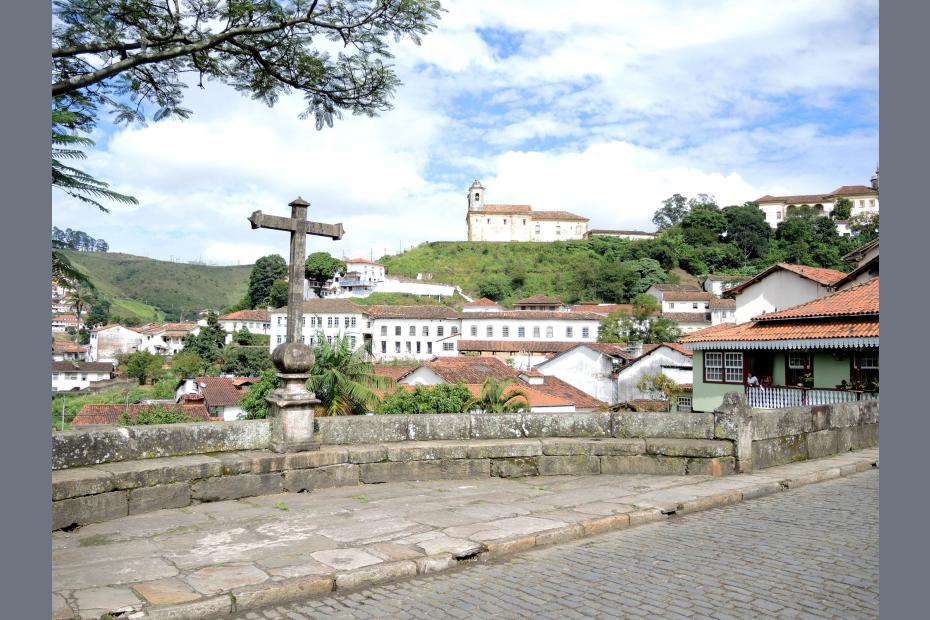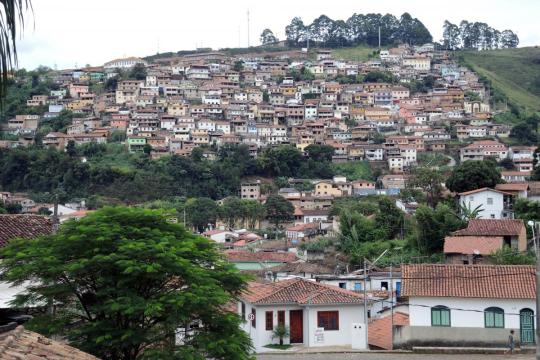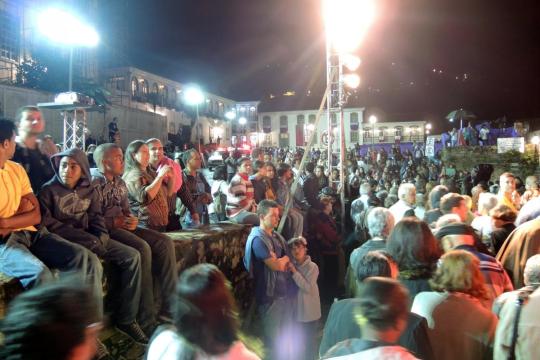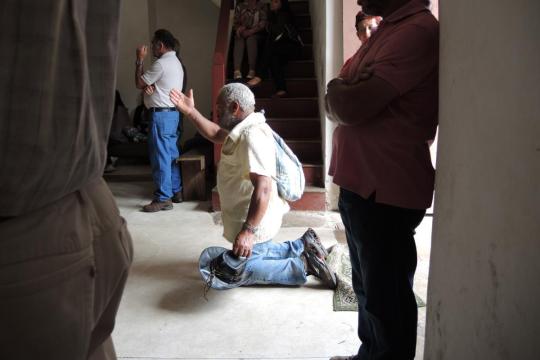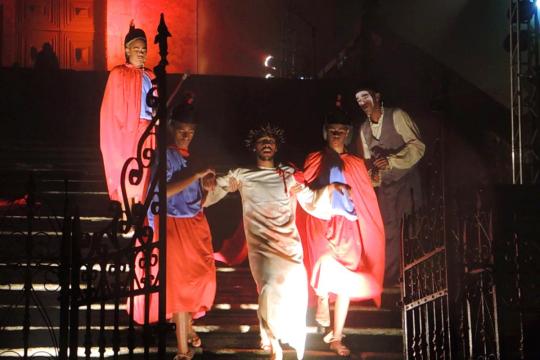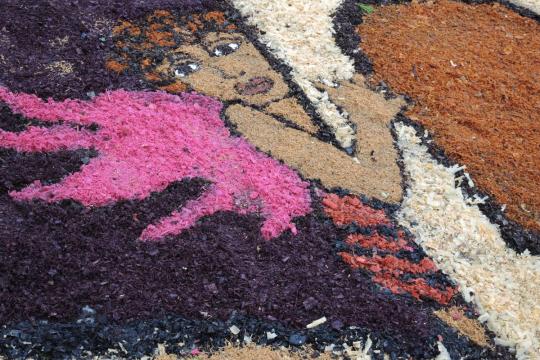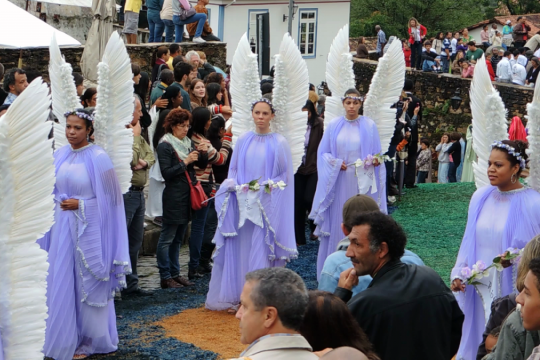With 13 baroque churches, colonial architecture and lush, steep terrain, Ouro Preto is a gem of a town, tucked into the mountains of Minas Gerais state. The wealth evident in those churches is a small sign of the fortunes once generated by gold mining there. Ouro Preto was defined by mining (the town name means “black gold,” while the state name means “general mines”). Today, it gets by primarily on tourism, mining less glamorous minerals, and as home to a university. It holds a place in the Brazilian imagination as a symbol of the country’s colonial and prospector past, of rugged individualism and a desire to subdue the land, and as the site of one of the first independence uprisings.
The vicious gold rush in the town’s early years decimated local native groups and saw the importation of many slaves for the mines. One of the most famous stories, one with deep symbolic and cultural meanings in Brazil, concerns Chico Rey (King Chico) a tribal leader brought as a slave from Ghana. He bought his freedom with gold flakes from the mines, organized many other slaves to buy their own freedom and eventually even acquired a mine. The church of Santa Efigênia, site of a youth passion play highlighted here, was built by Chico Rey and his followers. Racial intermarriage had long been a fact of life here, so Ouro Preto is not characterized easily by “black” and “white” communities, though there are still hierarchies based on racial “shades” and family histories.
Brazilians describe Ouro Preto as relatively untouched by modern religious change. Catholicism still dominates its religious landscape, and there are far fewer signs of Evangelical church-planting than in the big cities. Given that it is a university city and a place many Brazilians travel to, it is hardly immune to contemporary social currents, but compared to the mega-cities of Brazil, it conjures an older, less technological and global time. Local citizens pride themselves in keeping up, and even renewing, some of the more traditional practices of the church, and the city provides a great backdrop for such practices.
Holy Week processions
Holy Week in Ouro Preto puts that tendency on full display. It is marked by a variety of processions and special activities, coordinated by the four parishes of the town. Different parishes are assigned to take the lead each year. The primary events in 2013 took place in town in front of St. Francis of Assisi church, along processional routes in town, and at the Church of Our Lady of Sorrows, on a hill beyond the touristed center of town. In part because each of the town’s churches is relatively small, accommodating perhaps 200 people at a time, much of the activity happens outside in the open, either on a large stage set up in front of St. Francis church, or in processions and plays about town. Relatively small numbers attended the liturgies in the churches compared to the number who participated in or observed processions.
Holy Week in Ouro Preto is an example of a Brazilian penchant for religious spectacle. The 2013 Good Friday events were covered on national television, but at the same time all the week’s events have something of the feel of a small town play that gets everyone involved, regardless of talent. The baroque setting provides a beautiful backdrop, and large numbers of people appear in costume, but the style is not one of baroque solemnity and perfection.
There are no fewer than eight processions over the course of a week, bringing a statue of Our Lady of Sorrows from church to church, or Jesus carrying his Cross. The last and ultimate of these was an early morning Easter procession over a lavish, specially laid tapete, or carpet, made of colored wood shavings over the course of the one kilometer processional route.
For the washing of the feet, or for costumed roles as angels in the processions, parents sign up at the parish council to have their children included, and names are chosen by lottery. Confraternities, whose membership is often passed down in families, are given some of the roles during Holy Week as well, and are visible in the processions.
While the major processions take place in the center of town, in the more touristed areas, others that are less likely to be attended by tourists take place at a bit of a distance in the Church of Santa Efigênia and the Church of Our Lady of Sorrows.
Services and sermons
The week before Holy Week, the Church of Our Lady of Sorrows sponsors services to commemorate each of the sorrows of the Virgin. On the day before Palm Sunday, a procession featuring the statue of Jesus carrying the crucifix is carried about two kilometers from the Basilica of Our Lady of the Pillar to the Church of Our Lady of Sorrows, which is where the Palm Sunday Mass is held. Palm Sunday afternoon, the same statue is carried back to the main square in town, where a sermon is preached, after which it is carried down to the basilica, where another sermon is preached.
Many descriptions of church life in Brazil suggest a gulf between liberationist concerns and the piety that is evident at festivities like Holy Week in Ouro Preto. In the preaching during the week, however, concerns about violence and inequality were thoughtfully woven into the homily. One young priest, dressed in a Roman cassock (for a century, many Brazilian priests have worn street clothes) spoke fervently, among other themes, about the problems of patriarchy and machismo for Brazilian families.
At all the Easter liturgies and events, the laity were quietly attentive, even through homilies that last more than an hour. Active, physical participation, though it clearly happens in processions, in confraternities and in parish councils, does not seem to be a hallmark at these liturgies.
